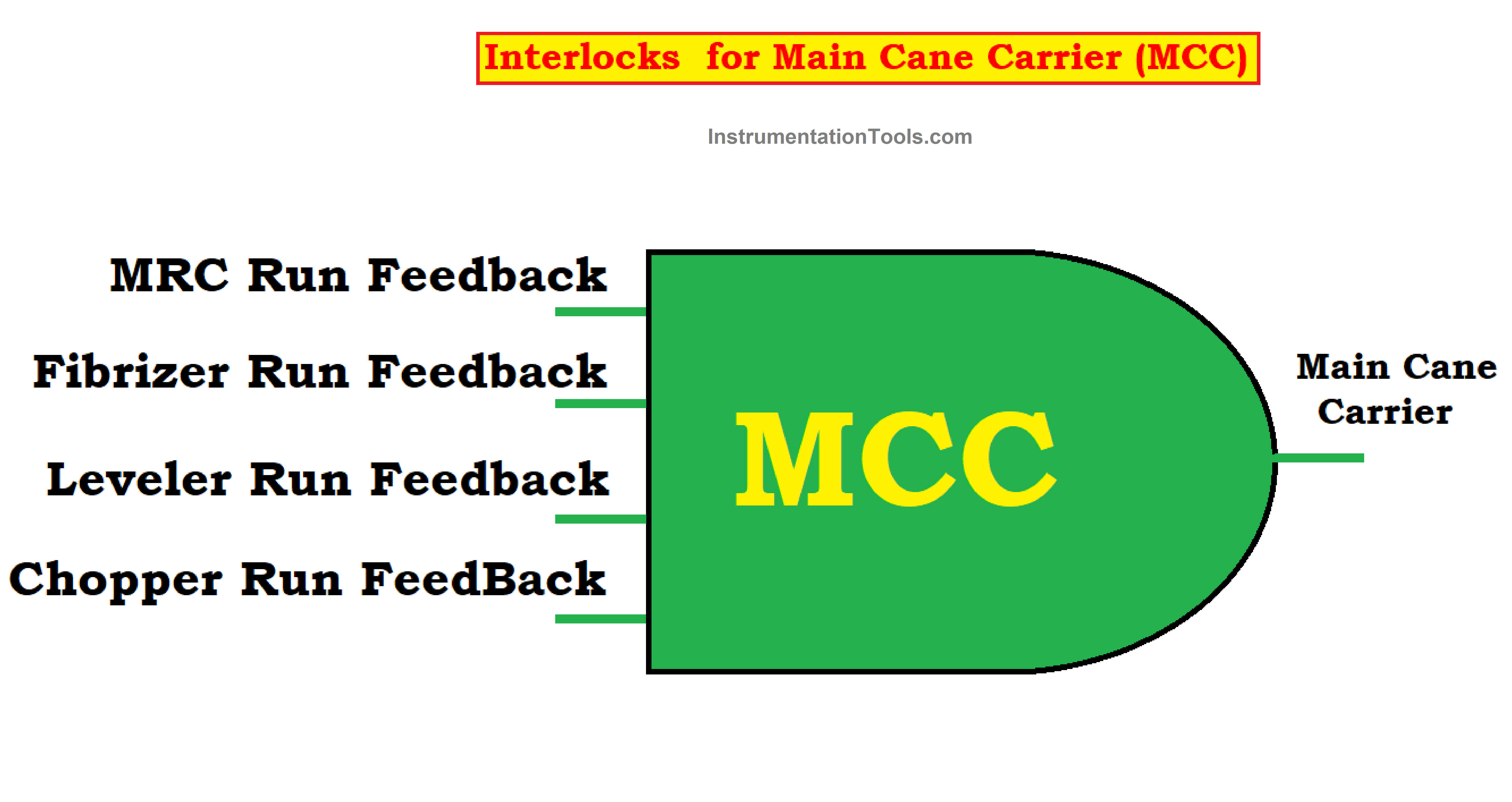For the safe and efficient operation of the milling tandem and its supported auxiliaries in the sugar industry
In the sugar industry, a mill house is a section of the plant where cane juice is extracted from the prepared cane with a squeezing & pressing operation called milling operation.
The disintegrated cane is fed into the first mill of milling tandem the subsequent mills perform the function of extraction of juice from bagasse soaked in water.
An Interlock is a feature of making two or more plant equipment or devices mutually dependent on each other to avoid damaging or losing machines or equipment from undesired hazards. These machines or devices may be electrical, electronic, or mechanical devices.
Interlocks in the process industry or in a power plant are considered as start permissive of any equipment.
Generally, a protection system consists of two types of interlocks
The main purpose of interlocks is to protect or safeguard the equipment against abnormal deviation of process parameters to unacceptable values.
The interlock system is made and controlled by utilizing appropriate sensors and probes to avoid harmful damage.
Interlock switches give more protection by preventing the machine from starting if it is not guarded accurately.
The possibility to provide adequate safety solutions and improve efficiency in the workplace and prevent the damage of any equipment or system or machine.
Protection is necessary to safeguard the plant equipment against undesired damages to machines or equipment.
In some conditions, a guard will not provide complete protection against damages by accidents and injuries.
Interlock logic is represented by using AND Gates. In this case, if all the possible conditions are satisfied and active in the ON state, then the process starts and operates in safe mode.
The Main Cane Carrier Turns on if all the feedback is in on state.
Interlock logic is represented by AND Gate

The Main Rake Carrier Turns on if all the feedback is in on state.
The logic is represented as shown below.
The GRPF turns on if all the feedback is in on state if the Mill is started and the RPM of that mill must be greater than equal to 100 RPM
GRPF is a Grooved Roller Pressure Feeder
In the logic diagram, the X is used to represent the Mill number.
X = I, II, III, and IV for mill I to IV. And X+1 → Represents the next mill.
Interlocks for GRPF I
Interlocks for GRPF II
Interlocks for GRPF III
The following conditions must be maintained
| MILL | CROWN SIDE | OFF-SIDE |
| Mill 0 | 175 | 175 |
| Mill I | 99 | 148 |
| Mill II | 152 | 167 |
| Mill III | 167 | 138 |
| Mill IV | 0 | 273 |
Hydraulic Pressure in Kg/cm2
In this article, we are going to discuss about shutter door control using induction motor…
Electrical Drives control the motion of electric motors. Motion control is required in industrial and…
PLC ladder logic design to control 3 motors with toggle switch and explain the program…
VFD simulator download: Master the online tool from the Yaskawa V1000 & programming software for…
The conveyor sorting machine is widely used in the packing industries using the PLC program…
Learn the example of flip-flop PLC program for lamps application using the ladder logic to…